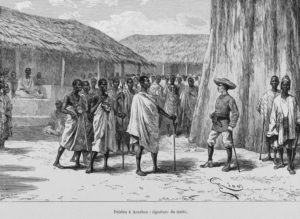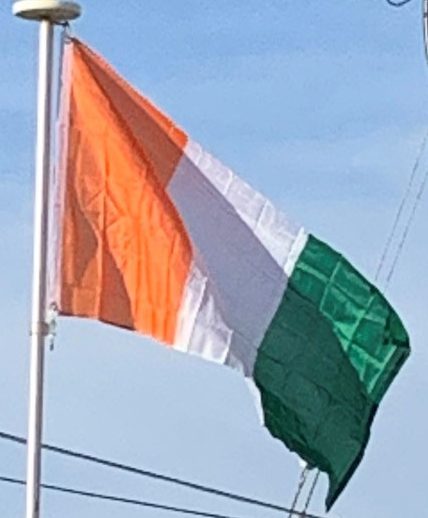Assinie’s survival was precarious, however; the French were not firmly established in Ivory Coast until the mid-19th century. In 1843–4, French admiral Louis Edouard Bouët-Willaumez signed treaties with the kings of the Grand Bassam and Assinie regions, making their territories a French protectorate. French explorers, missionaries, trading companies, and soldiers gradually extended the area under French control inland from the lagoon region. Pacification was not accomplished until 1915.
Activity along the coast stimulated European interest in the interior, especially along the two great rivers, the Senegal and the Niger. Concerted French exploration of West Africa began in the mid-19th century, but moved slowly, based more on individual initiative than on government policy. In the 1840s, the French concluded a series of treaties with local West African chiefs that enabled the French to build fortified posts along the Gulf of Guinea to serve as permanent trading centers.

The first posts in Ivory Coast included one at Assinie and another at Grand Bassam, which became the colony’s first capital. The treaties provided for French sovereignty within the posts, and for trading privileges in exchange for fees or coutumes paid annually to the local chiefs for the use of the land. The arrangement was not entirely satisfactory to the French, because trade was limited and misunderstandings over treaty obligations often arose. Nevertheless, the French government maintained the treaties, hoping to expand trade.
France also wanted to maintain a presence in the region to stem the increasing influence of the British along the Gulf of Guinea coast. The French built naval bases to keep out non-French traders and began a systematic pacification of the interior to stop raids on their settlements. They accomplished this only after a long war in the 1890s against Mandinka tribesmen, mostly from the Gambia. However, raids by the Baoulé and other eastern tribes continued until 1917.
The defeat of France in the Franco-Prussian War in 1871 and the subsequent annexation by Germany of the French province of Alsace-Lorraine caused the French government to abandon its colonial ambitions and withdraw its military garrisons from its West African trading posts, leaving them in the care of resident merchants. The trading post at Grand Bassam in Ivory Coast was left in the care of a shipper from Marseille, Arthur Verdier, who in 1878 was named Resident of the Establishment of Ivory Coast.
In 1886, to support its claims of effective occupation, France again assumed direct control of its West African coastal trading posts and embarked on an accelerated program of exploration in the interior. In 1887, Lieutenant Louis Gustave Binger began a two-year journey that traversed parts of Ivory Coast’s interior. By the end of the journey, he had concluded four treaties establishing French protectorates in Ivory Coast. Also in 1887, Verdier’s agent, Marcel Treich-Laplène, negotiated five additional agreements that extended French influence from the headwaters of the Niger River Basin through Ivory Coast.
French Colonial Era:
By the end of the 1880s, France had established control over the coastal regions of Ivory Coast, and in 1889 Britain recognized French sovereignty in the area. That same year, France named Treich-Laplène titular governor of the territory. In 1893, Ivory Coast became a French colony, and Captain Binger was appointed governor. Agreements with Liberia in 1892 and with Britain in 1893 determined the eastern and western boundaries of the colony, but the northern boundary was not fixed until 1947 because of efforts by the French government to attach parts of Upper Volta (present-day Burkina Faso) and French Sudan (present-day Mali) to Ivory Coast for economic and administrative reasons.
